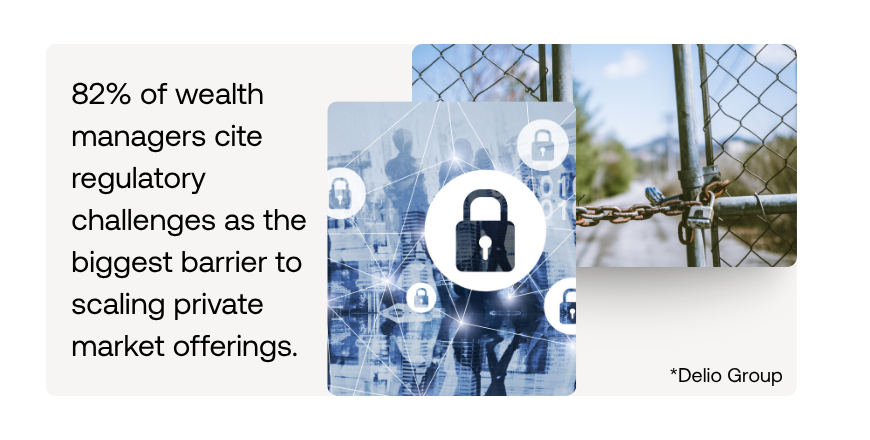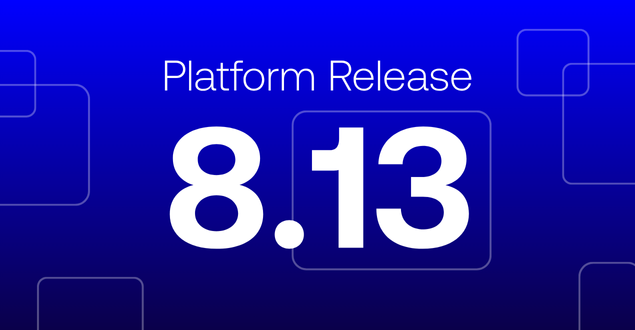
Table of Contents
- Legacy systems constrain growth
- Fragmented systems
- Limited AI adoption
- Regulatory scrutiny & compliance risks
- Insufficient data strategy, quality & governance
- Optimize your workflows
Get in touch to learn how Genesis can help you modernize your workflows
5 bottlenecks hindering wealth management growth in 2025 and how to tackle them
In 2025, wealth management leaders face a complex environment shaped by economic volatility, regulatory tightening, evolving client expectations, and relentless digital disruption. The imperative is clear: improve operational resilience, ensure compliance and deliver seamless client experiences, while maintaining profitability.
Success hinges on addressing legacy technology inefficiencies and embedding automation, strong data governance, and scalability into every layer of operations. Below, we explore the key pain points that wealth managers are facing while trying to grow, and present actionable strategies to navigate them.
1. Legacy systems constrain growth
Many wealth firms struggle to scale due to legacy systems and manual processes. In fact, 44% of wealth managers say their own tech is outdated, and 31% say it’s not fit for purpose (Avaloq). These outdated workflows prevent expansion into new asset classes, geographic regions, or client segments.
According to Avaloq, 25% of investors would consider switching wealth managers who fail to modernize. Simultaneously, operational costs are rising due to inflation and talent shortages. The market’s active consolidation further pressures firms to become more agile and cost-efficient.

Solution: Consider implementing a modular, multi-asset solution that supports quoting and execution at scale. Features such as internal distribution enable firms to efficiently leverage held positions, while portfolio tools allow for rapid proposal generation, tailored to evolving investor demands. Implementing a strong foundation supports seamless expansion and product innovation without overwhelming operational resources.
2. Fragmented systems slow communication
Wealth management growth is hindered by fragmented systems. According to SEI, relationship managers spend just 43% of their time on ‘golden time’, or high-value tasks such as client engagement or portfolio strategy, with manual communications draining productivity. RFQs, pricing, and trade execution are still often handled through disparate tools like email, chat, and phone, leading to operational bottlenecks and slower investment execution.
Furthermore, a Wipfli survey found that 58% of respondents cite automation as having a major positive impact on wealth management—yet adoption remains inconsistent.
Solution: Consider integrating investment advisors, wealth advisors, bankers, traders, and execution desks with real-time communication and automated workflows to streamline pricing and execution. This will help to reduce manual touchpoints, accelerate decision-making, and improve trade accuracy, allowing firms to shift their focus to value-added advisory and client service.
3. Limited AI adoption
One obvious opportunity to reduce operational inefficiencies and promote growth is by implementing AI tools. Yet despite AI’s promise, adoption within wealth management firms remains slow. One reason for this is the perceived risks of implementation.
A recent Gartner study finds 45% of CEOs see gen AI as more of a risk than an opportunity. However, on the other hand, the remaining 55% see it as an opportunity to help modernize outdated technology. And according to ThoughtLab and LSEG, over 90% of investors are comfortable with AI supporting their financial products and services.
Solution: Adopt a scalable, and cautious approach to AI. Start by implementing intelligent automation across client engagement, portfolio construction and execution to enable faster, data-driven decisions. Ensure that your systems can integrate with AI-backed tools that are auditable and compliant with regulatory requirements. By implementing these tools into the trade lifecycle, you can meet demanding client expectations without sacrificing compliance or control.
4. Regulatory scrutiny & compliance risks
Another hindrance to growth within the wealth management sector is regulation. In fact, 82% of wealth managers cite regulatory challenges as the biggest barrier to scaling private market offerings. This is because compliance demands continue to escalate.
Regulations such as GDPR, AML, and fiduciary duties require stricter data transparency and auditability. Yet many wealth management firms lack integrated systems to track trade decisions from end to end. And the consequences of non-compliance can be severe. For instance, firms risk penalties of up to €20 million or 4% of annual turnover for data breaches under GDPR (Xpedition).

Solution: Automate compliance workflows with embedded audit trails to ensure regulatory alignment. Solutions that record every stage of the trade lifecycle, including pricing rationale and client communications, can help to reduce operational risk and enhance transparency.
5. Insufficient data strategy, quality & governance
An EY survey found 79% of firms cite data quality as a persistent pain point, and 45% say their organization lacks a trusted data layer. Inconsistent data leads to missed opportunities, client dissatisfaction, and poor compliance. Firms also face increasing pressure to deliver analytics and portfolio transparency. For example, 66% of investors say that access to portfolio visualization and analytics is critical for building trust in their advisor (Avaloq).
Solution: Adopt a unified data architecture that can synchronize portfolio, pricing, and trading data in real-time. This will enable advisors to offer faster, more accurate recommendations. Role-specific dashboards and automated reporting improve both internal productivity and client engagement. Implementing these solutions will help to ensure data consistency, unlock insights, and create a competitive edge in client service delivery.
Optimize your workflows to meet the expectations of the modern investor
To scale, wealth managers need a holistic solution that embeds automation, compliance, and data intelligence across the entire trade lifecycle. This will promote:
- Faster decision-making through banker-to-trader collaboration with real-time pricing;
- Increased operational efficiency via centralized, multi-asset trade execution and internal liquidity tools;
- Regulatory confidence with secure, auditable workflows
- Enhanced client service through better quoting, portfolio management, and execution reliability
Get in touch today to learn how your firm can drive growth, reduce risk, and meet the expectations of the modern investor today.












